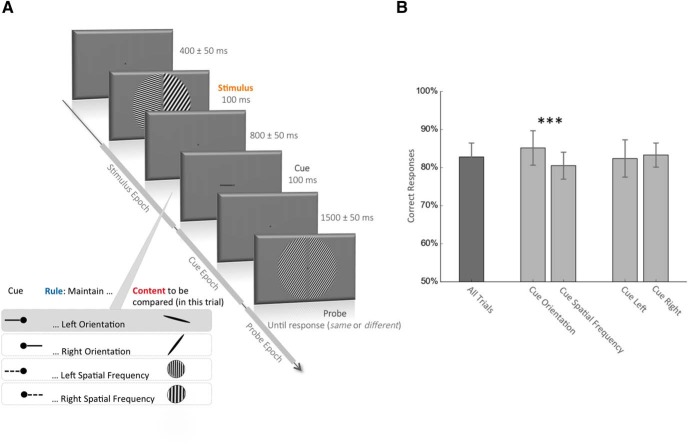Figure 1.
Behavioral task and performance. A, Visual working memory task. The stimulus appears for 100 ms and is composed of the following four different visual attributes: left and right spatial frequency (each chosen from among five possible: 1, 1.5, 2.25, 3.375, or 5.06 cycles/°) and left and right orientation (each chosen from among five possible: −72°, −36°, 0°, 36°, and 72°; 0° = vertical). After a delay of 800 ± 50 ms, the cue appears for 100 ms and indicates which visual attribute of the stimulus the participant has to compare with the upcoming probe. A left or right solid line cue indicates respectively the left or right orientation, and a left or right dotted line indicates respectively the left or right spatial frequency of the stimulus. After a 1500 ± 50 ms delay, the probe appears and the participant is required to answer whether the cued stimulus attribute is the same or different from the corresponding probe attribute. In the trial depicted in the figure, the solid line cue pointing to the left instructs the participant to compare the orientation on the left side of the stimulus with the orientation in the probe (the correct answer in this case is “different”). We refer to the time between the stimulus and the cue as the stimulus epoch, the time between the cue and the probe as the cue epoch and the time after the probe as the probe epoch. B, Behavioral performance. The values are the mean percentage and SD of correct responses across participants. The mean performance across all trials was 83 ± 3.6%. Participants were better when they had to remember an orientation compared with a spatial frequency (85% vs 81%, p < 0.001, paired t test). Performances were similar for trials with a left and right cue.

